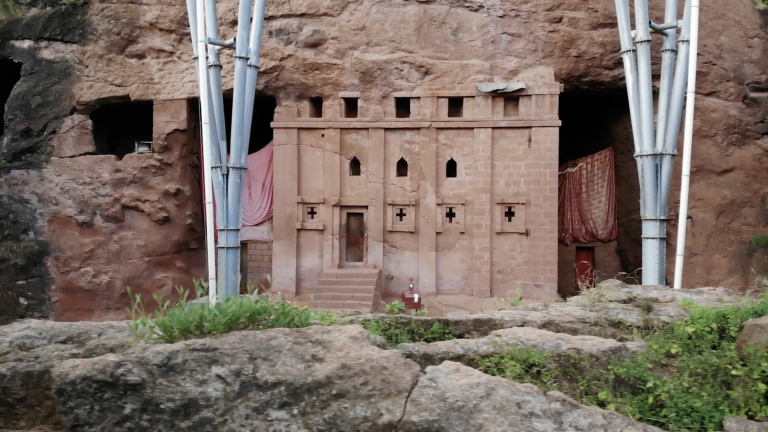
© « La Cité creusée dans la roche », de Nicolas Baker © CNRS Images 2020
View the mediaScientific news
With its 12th-century churches carved in the rock, Lalibela is one of the most breathtaking sites in Africa’s cultural heritage. After ten years of on-site scientific collaboration, it is now seen in a new light in an immersive exhibition.

© « La Cité creusée dans la roche », de Nicolas Baker © CNRS Images 2020
View the mediaThe town of Lalibela in Ethiopia has fascinated both scientists and tourists for decades, with thousands of visitors crowding there every year to admire its unique churches. They have made the town’s reputation, which is nicknamed “The Jerusalem of Ethiopia”. There are eleven colossal churches carved out of the volcanic rock of the Ethiopian Highlands which are thought to have been built in the late 12th century to become the crux of a Christian kingdom. But the town is far from having yielded all its secrets, as the method used – excavation – surprises and raises questions.
After ten years of Franco-Ethiopian scientific collaboration, focused on both the excavations and digitisation of the site, Lalibela is now revealed in a new light in an exhibition combining history and state-of-the-art technology. From 6 October, you will be able to discover it using 3D immersive devices in Ethiopia’s capital, Addis Ababa.
And we will take you there from the comfort of your home with our on-site reports that you can now watch!
Our work is guided by the way scientists question the world around them and we translate their research into images to help people to understand the world better and to awaken their curiosity and wonderment.